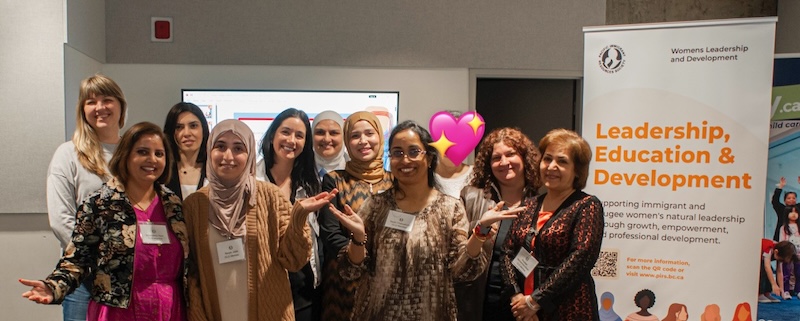British Columbia is on track to meet its child care expansion targets, having already created over 25,000 new spaces toward a goal of 40,000 by 2028. However, most new spaces have been developed by for-profit operators, despite the $10-a-day program’s aim to prioritize public and non-profit delivery.
While the province has made progress in reducing child care deserts, access remains uneven — particularly due to the high number of part-time spaces that make full workforce participation difficult for many parents.
As part of our ongoing Building a Childcare System initiative, members of the Childcare Leadership Group 4 (CLG 4) reflected on these trends and what they mean for immigrant and racialized families in B.C.
Amandeep noted how the data challenged her assumptions about sector growth:
“Honestly, the part that surprised me most was how many of the new spaces are still being created by for-profit centres. I had assumed the $10-a-day plan would be shifting things more strongly toward non-profit and community-based models, but the data shows otherwise. From my own experience working in child care, I see how non-profit programs tend to prioritize stability, relationships, and equity — so it worries me that growth is leaning in the other direction.
Looking at the current trends in B.C., what feels most urgent to me is making sure immigrant and racialized families can actually access the spaces that are being created. It’s not just about hitting the numbers; it’s about who those spaces really serve. Families I work with often need full-time care to be able to work or study, but so many new spaces are part-time, which doesn’t meet their needs.
I think the priority has to be investing in more full-time, community-based, non-profit spaces in the neighborhoods where access is still limited. Partnering with organizations that already work with immigrant families — like PIRS — would make a huge difference. And listening directly to families about what kind of care works for them should guide these decisions.
For me, it comes down to equity: we can celebrate the progress toward creating thousands of new spaces, but unless those spaces are truly accessible and supportive for immigrant and racialized families, the system isn’t fully working yet.”
Swati emphasized that expansion must be paired with intentional equity measures:
“Given the trends of for-profit dominance, prevalence of part-time spaces, and uneven access, I believe the most urgent need is for targeted, stable funding and outreach to immigrant and racialized families. This should include funding community-based non-profit providers, culturally appropriate programming, language supports for parents, and transparent wait-list systems. Without these, families who already face systemic barriers may continue to be excluded from high-quality child care even as total spaces increase.”
For Sawsan, an Early Childhood Educator Assistant and single parent, flexibility is key:
“First of all, as an ECEA, I need to have a part time job because I’m a single parent. It’s hard to get everything done in time, so I guess we should get flexible time for jobs and then we can figure out what works best for parents to have childcare available for their children.”
The Childcare Leadership Group’s reflections remind us that expanding spaces is only part of the goal — achieving equity means ensuring those spaces are accessible, affordable, and responsive to the realities of immigrant, refugee, and Indigenous families.

